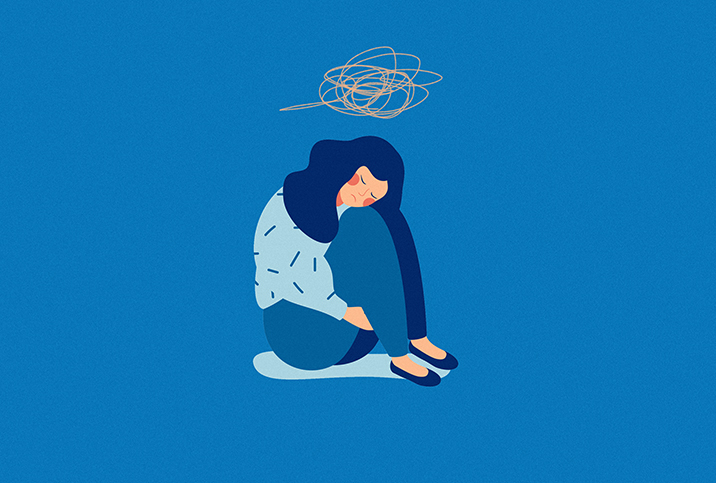What Happens After a Stillbirth Diagnosis

Finding out your baby has died in the womb is the worst news an expectant couple can hear. A stillbirth diagnosis occurs with approximately 24,000 babies delivered in the United States every year. But what happens next?
The initial considerations when deciding on options for management are the pregnancy stage, the pregnant person's medical condition and the doctor's abilities, explained Kate White, M.D., an associate professor of obstetrics and gynecology at the Boston University School of Medicine and vice chair of academics in the OB-GYN department at Boston Medical Center.
In most cases, patients can take some time to decide how to proceed.
Making a delivery decision
"The process is still very much, or should be, focused on the mom," said Kiarra King, M.D., a Chicago-based OB-GYN and Instagram influencer.
"Counseling the patient through the process is a vital step. In most cases, a woman doesn't have to deliver on the day the diagnosis is made. This can allow for patients to process the loss, to a certain extent, prior to delivery," King said.
Most hospitals provide bereavement care, according to King. "A team will visit the patient and family to help them through the process. Many hospitals will make efforts to separate the woman from busier parts of a labor and delivery unit—some may have separate units/floors for these circumstances," she said.
King and White both said that doctors usually advise a vaginal delivery rather than a cesarean section unless extenuating circumstances exist. Vaginal delivery is much safer, and a C-section (which is major abdominal surgery) can pose risks for the parent and future pregnancies.
Whether induced or naturally occurring, patients who deliver vaginally typically have the standard pain management options.
"Incisions made on the uterus can impact future pregnancies and lead to increased risks of obstetric conditions, such as disorders in placentation (placenta previa/accreta/percreta/increta)," King explained. "Therefore, unless a woman presents in active labor, induction of labor is generally recommended. Most importantly, a woman should be involved in the process and able to make an informed decision."
If the doctor determines it is safe to do so, a patient may have the choice to wait for natural labor, White said. Whether induced or naturally occurring, patients who deliver vaginally typically have the standard pain management options.
"You may also have the option of a dilation and evacuation (D&E), where the doctor surgically removes the pregnancy through your cervix," White added.
Long-term effects on future pregnancies
Many people who have stillborn babies go on to have healthy children. However, having a previous stillbirth or other adverse pregnancy outcome does put a woman at increased risk of a subsequent stillbirth.
"Compared with women who had a live birth in their first pregnancy, those who experienced a stillbirth were almost five times more likely to experience a stillbirth in their second pregnancy," according to a 2015 systematic review and meta-analysis published by the BMJ.
"Having a stillbirth itself doesn't have any long-term consequences for the health of the pregnant person or of future pregnancies," White said. "That said, the testing performed after a stillbirth may reveal a medical condition or a genetic predisposition that may have an impact on the pregnant person's future health."
Your doctor will monitor your health and that of the baby very closely in any future pregnancies, White noted. "You may have more prenatal visits and ultrasounds, and you will likely have fetal testing (nonstress tests looking at the baby's heartbeat) regularly in the weeks before your due date. Your doctor may also choose to deliver you before your due date."
'Those who experienced a stillbirth were almost five times more likely to experience a stillbirth in their second pregnancy.'
Lindsey Wimmer, a nurse practitioner certified in perinatal loss care, suffered a stillbirth in her first pregnancy. "We went on to have three more children," said Wimmer. "Each of those pregnancies was consumed by anxiety. We now know that there is no time during pregnancy that we could 'let our guard down.'
"In a bittersweet turn of events, our next children also had issues toward the end of the pregnancies," Wimmer continued. "But we had extra testing and monitoring that identified them and allowed us to manage those issues so our babies could be born alive and healthy."
According to Wimmer, she only qualified for additional testing and monitoring because of her first pregnancy loss. "These experiences led me to believe that there is no such thing as a 'low-risk' pregnancy. My ultimate wish is that every pregnancy has access to the kind of testing and monitoring I was able to have in my later pregnancies to better identify babies who are at risk."
Coping with stillbirth
After delivery, many families choose to spend time with their baby and participate in the usual bonding and nurturing rituals, such as holding, bathing, dressing, and reading or singing to them, Wimmer said. Parents can also decide whether to have an autopsy or other testing and request any cultural or religious rites.
"There are few memories for parents to hold onto, which is why spending time with their baby in a special bereavement suite or room for a few hours or days can really help," said Jen Coates, M.S., director of bereavement support and volunteering at Sands, the leading stillbirth and neonatal death charity in the United Kingdom. "Taking hand- and footprints, photos and caring for their baby by washing and dressing them can be so helpful."
"I encourage all families to spend time with your baby," Wimmer said. "It may feel awkward at first, but you will always treasure those moments. I also encourage them to take pictures." Some hospitals and nonprofits offer mementos, such as footprints and photos, for stillbirth parents.
"Emotionally, my best advice is to be kind to yourself," Wimmer continued. "Know that grieving takes a tremendous amount of work. Don't hesitate to ask for help. Give yourself some grace as you figure out your 'new normal.' Find a way to incorporate this baby and this experience into your family story. It's OK that you're not the same person you were before this experience. It may take some time, but you will find ways to remember or include this baby in your life (and your family's life) as you move forward.
"The emotions and the journey are different for everyone, so just focus on what feels best for you and your family. Finally, know that you are not alone," Wimmer concluded. "It can feel very isolating, but there are people here who are willing to listen and be there for you."


















